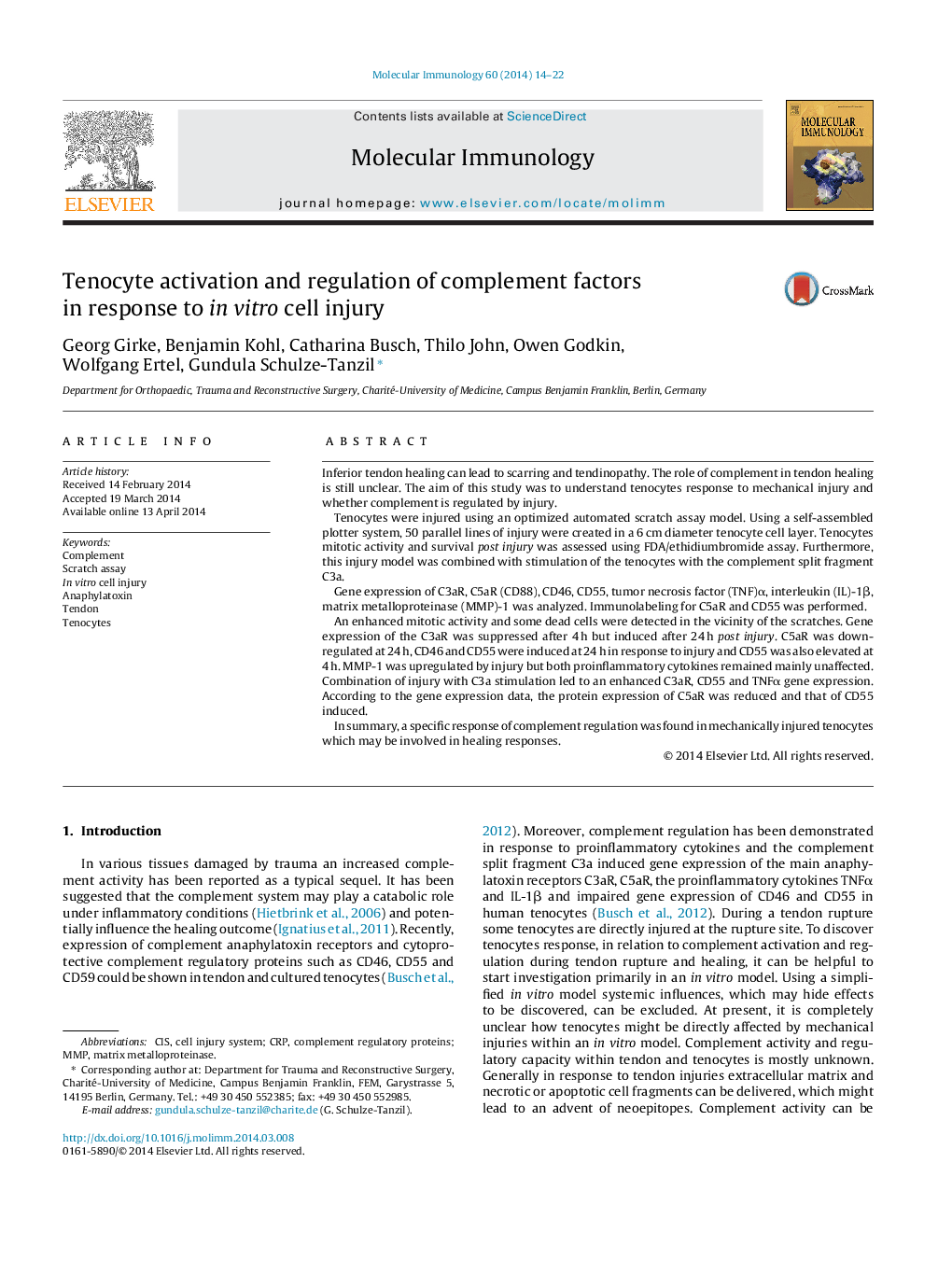| Article ID | Journal | Published Year | Pages | File Type |
|---|---|---|---|---|
| 2830834 | Molecular Immunology | 2014 | 9 Pages |
•We describe an automatized in vitro method to induce reproducible tenocyte injury.•Cell injury led to a significant induction of mitoses in tenocytes.•Gene expression of C3aR in tenocytes was significantly elevated after cell trauma.•CRP expression, but not that of cytokine IL-1β and TNFα increased after cell injury.•The presence of C3a further enhanced injury induced C3aR and CD55 gene expression.
Inferior tendon healing can lead to scarring and tendinopathy. The role of complement in tendon healing is still unclear. The aim of this study was to understand tenocytes response to mechanical injury and whether complement is regulated by injury.Tenocytes were injured using an optimized automated scratch assay model. Using a self-assembled plotter system, 50 parallel lines of injury were created in a 6 cm diameter tenocyte cell layer. Tenocytes mitotic activity and survival post injury was assessed using FDA/ethidiumbromide assay. Furthermore, this injury model was combined with stimulation of the tenocytes with the complement split fragment C3a.Gene expression of C3aR, C5aR (CD88), CD46, CD55, tumor necrosis factor (TNF)α, interleukin (IL)-1β, matrix metalloproteinase (MMP)-1 was analyzed. Immunolabeling for C5aR and CD55 was performed.An enhanced mitotic activity and some dead cells were detected in the vicinity of the scratches. Gene expression of the C3aR was suppressed after 4 h but induced after 24 h post injury. C5aR was down-regulated at 24 h, CD46 and CD55 were induced at 24 h in response to injury and CD55 was also elevated at 4 h. MMP-1 was upregulated by injury but both proinflammatory cytokines remained mainly unaffected. Combination of injury with C3a stimulation led to an enhanced C3aR, CD55 and TNFα gene expression. According to the gene expression data, the protein expression of C5aR was reduced and that of CD55 induced.In summary, a specific response of complement regulation was found in mechanically injured tenocytes which may be involved in healing responses.
Graphical abstractFigure optionsDownload full-size imageDownload as PowerPoint slide
